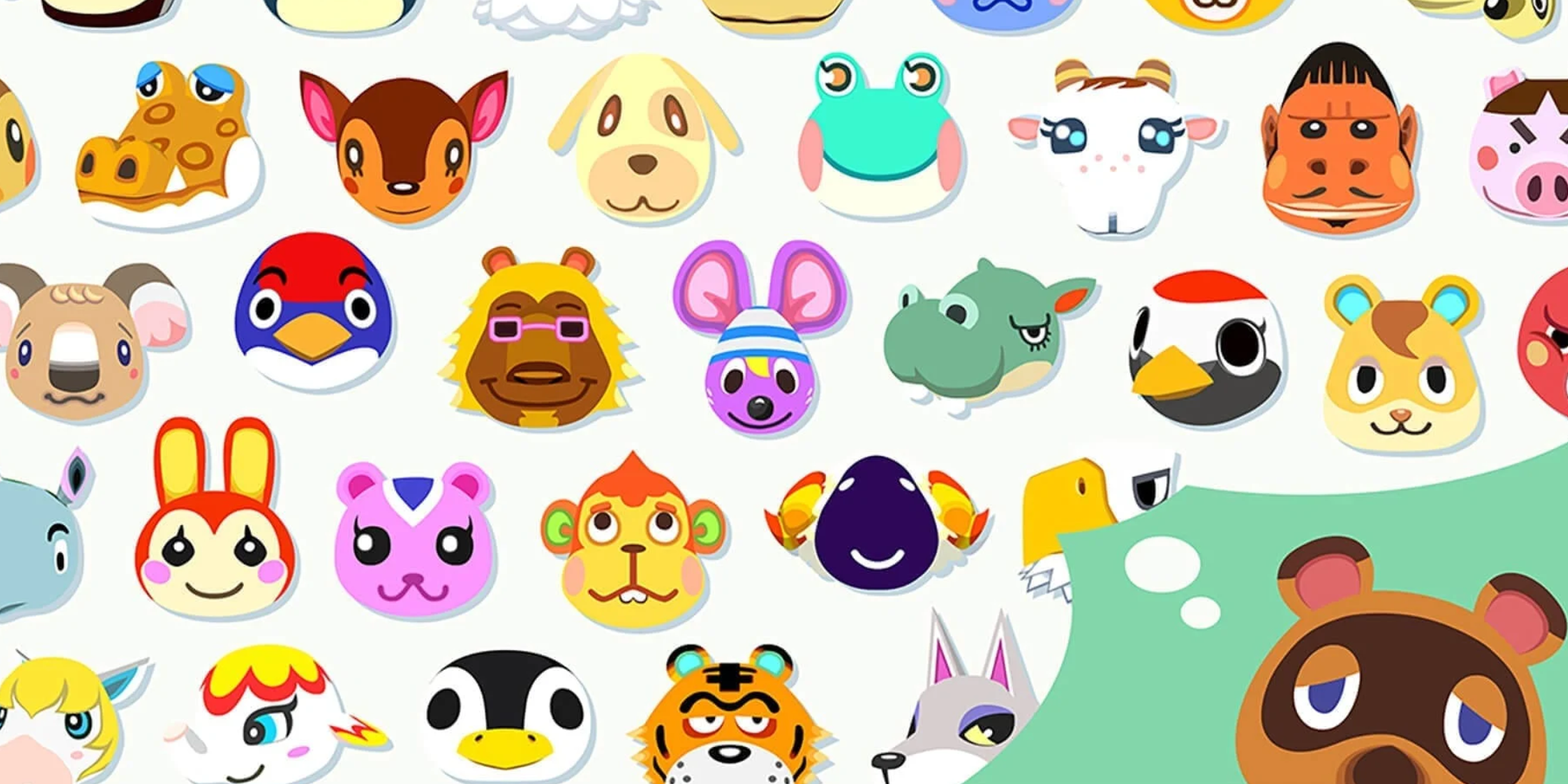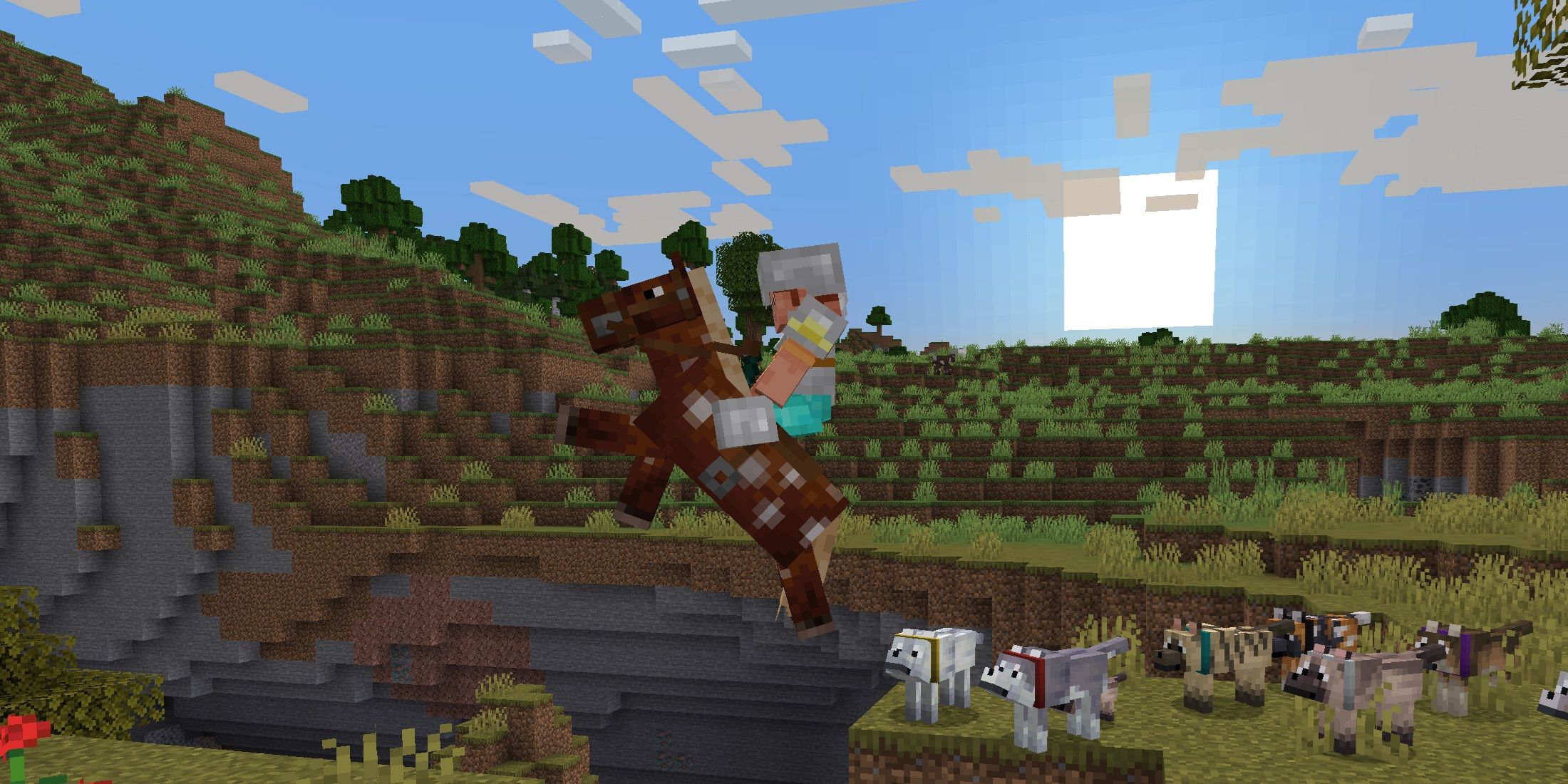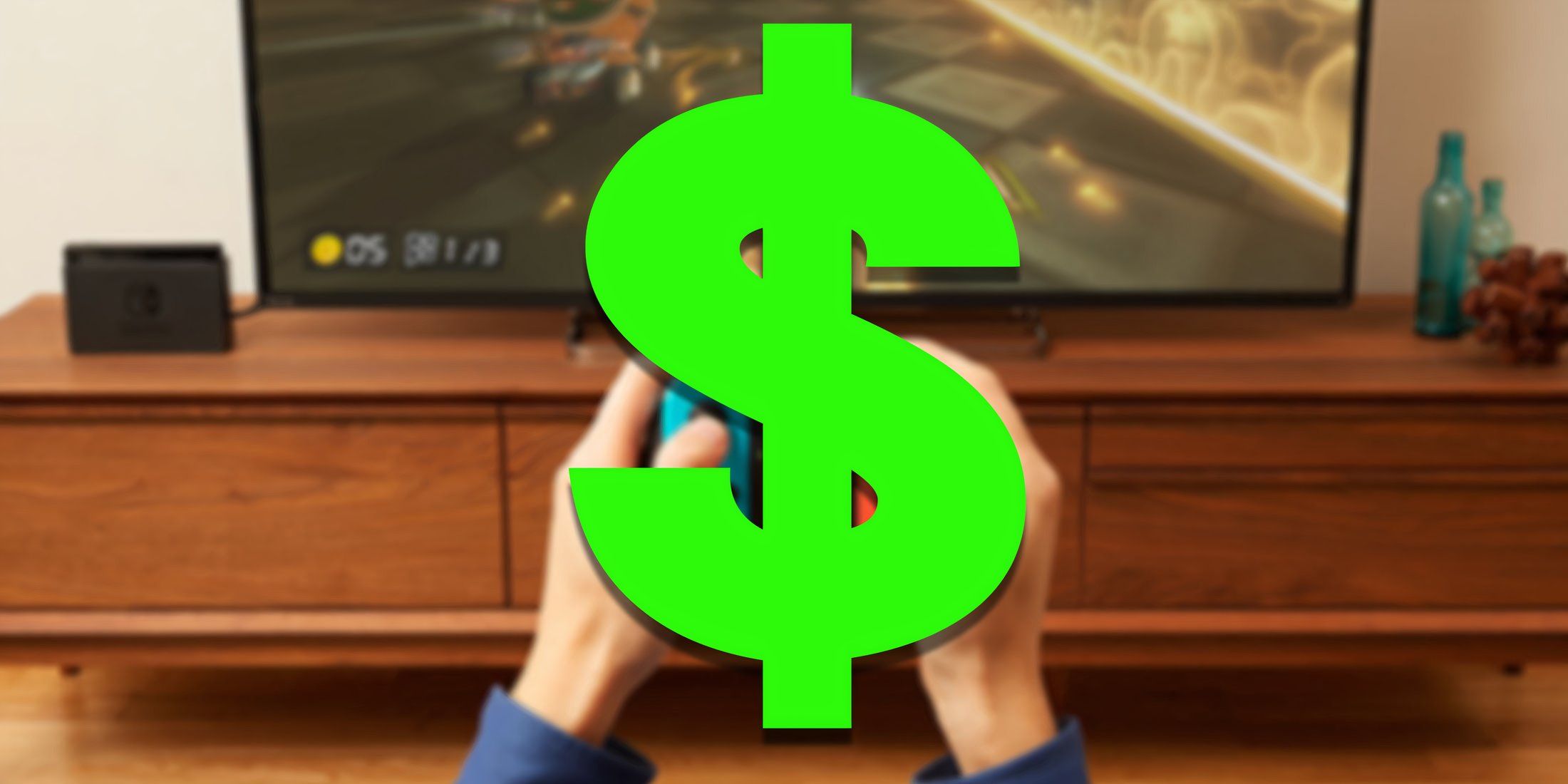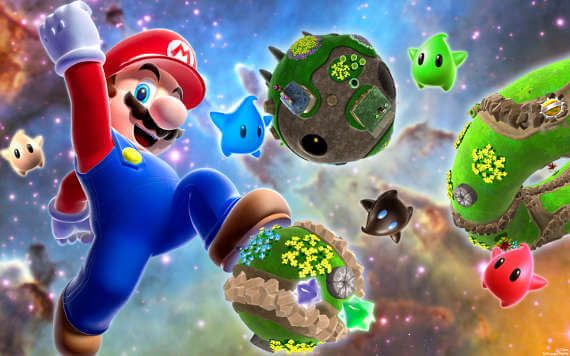Following the gaming industry generally requires an awful lot of looking to the future. The endless wave of new releases that demand our attention has our gaze transfixed on tomorrow. It's an unfortunate symptom of our devotion to the new, and it usually keeps us from one very important activity: casting a critical eye over the games of yesterday, to see if they still hold that magical spark that engaged us when the media and marketing were at their most influential.
So, with all this in mind, and with the release of another Nintendo flagship title just around the corner, let us take another look at its predecessor: Super Mario Galaxy.
When speaking to the strengths of any series - Mario's in particular - the legacy of what came before is an important reference point. With the release of Mario 64, the franchise set a seriously high water mark in gaming. Among its many innovations, the introduction of camera-relative directional controls was perhaps the most radical - it's designers literally wrote the book on how navigating a 3D space in games should work. Mario 64 took the simple pleasures of platform-adventuring and birthed them anew to take place in 3D worlds.
The next flagship Mario release - Super Mario Sunshine - arrived several years later on the Gamecube, and after a few confused looks and furrowed brows, blew our minds once again. Set in the tropical paradise of Isle Delfino, the radical departure from the Mushroom Kingdom we grew up with was handled so expertly that we embraced it with open arms. The pure brilliance of the sun-bathed world, surrounded by crystal clear waters of Isle Delfino, was intoxicating, making us forget that Mario was now a convicted graffiti artist and the purpose of the game was to carry out his sentence. The water pack added new and exciting gameplay mechanics that, once again, redefined Mario games, and set the benchmark even higher for all the copycat titles that had been flooding the market in the wake of Mario 64's success.
But where to take the franchise next? The need to create the next great innovation for the new Mario release was very real for the Nintendo. In which genre-busting direction could they take the plumbing hero, while still retaining the core components that Mario is known for? The answer came in the form of the Wii, and more specifically, the Wii controller.
2007 was quite the year in which Mario chose to mark his his return. Between such gargantuan releases as Halo 3, Call Of Duty 4: Modern Warfare, Mass Effect, Crysis and Bioshock; Mario stepped up to the podium in his primary-colored overalls and took them all to school.
While the other behemoth game releases of that year were incredible games in their own right, they all catered one specific type of experience. This onslaught of overtly 'mature' games offered different bites of the same meal: They were all dark and somber tales filled with ammo crates, grunts, shoulder pads and tough-talk; designed to furrow brows and grit teeth.
It's as though Miyamoto-san was observing all of this from his lofty office at Nintendo HQ and thought to himself, what happened to enjoyment? What happened to laughter? What happened to gaming for pleasure? The antidote, for anyone seeking respite from the Gray Marines on Planet Brown, was Super Mario Galaxy. In fact, in a lot of ways it still is.
The structure of Super Mario Galaxy was very similar to that of its two immediate predecessors, featuring one giant hub world that would serve as a safe training ground for Mario, with portals to incrementally more difficult worlds opening up gradually throughout the game. Each world was varied and large enough to house many quests within that each required the player to do different things in order to finish them.
In Super Mario Galaxy, the hub world took the form of Rosalina's impractically-constructed space craft. Her ship was broken, requiring stars to aid repairs. Mario had to fly to distant galaxies and complete quests to earn stars. The stars earned would reactivate previously inaccessible locations on Rosalina's ship that, too, would house similar portals to more difficult galaxies.
The one contentious component of the game that sticks out in my mind as its one weakness was the story. At the time of its release, critics lauded Super Mario Galaxy for it's unconventional storyline, and the dramatic departure it took from previous games in the series. Yes, Princess Peach had been captured by Bowser; and yes, Mario's ultimate goal was to rescue her. But the introduction of a mysterious space girl called Rosalina, and her clique of unbearably cute star-shaped 'Lumas' was altogether new. Of extra special note was her slightly disturbing backstory - a story which Mario could occasionally sit and listen to if the player wished - which was full of woe and loneliness. As unconventional as the story was however, it was pure hogwash, serving only as a vehicle to hurl a million tricks and traps at the man with the mustache. But let's face it; nobody ever played Mario for the compelling narrative arc.
The Wii's bizarre, totally unconventional controller was still fairly new-fangled, with gamers still getting to grips with its nuances in casual party games. Manhandling such alien technology to harness the precise thumb-play required by Mario was another matter entirely. Luckily, the brain trusts at Nintendo, with Shigeru Miyamoto at the helm, tweaked the input scheme to new heights of sublime, and eradicated any notions of doubt.
All conscious thought of using the wacky controllers evaporated within moments. Mario moved around globes and disks just as easily as he did traversing a 2D landscape. The controls were soft precise and even a little forgiving. Slowly but surely the micro-management of having to think about handling a controller and a nunchuck evaporated, leaving you free to focus on the longer-term objectives and simply let the game envelope you. Mario’s moves had returned in full affect: the long jump was back, as was a personal favorite of mine: the triple-jump. Butt-stomping was in, as was an altogether new spin attack. This move, supposedly triggered by a brief horizontal waggle on the Wiimote, was actually more successful, I found, when executed via a single vertical flick. Whether this speaks to tremendous job the developers did with the controls, or to the limited capability of the Wiimote’s motion-sensors, however, is debatable.
Story and controls are one thing, but the environment has always been where Mario's magic lies. How could Nintendo possibly structure a new Mario universe that would take advantage of such 3-dimensional controls?
The way the game eased you into those first moments in Super Mario Galaxy's world were minimal and measured. Without giving too much away too early, the game slowly introduced the layers of gameplay on offer in very exact and measured doses. Explaining that you could hurl Mario across the the entire surface of a small orb with one controller stick is conveyed organically via the innocent activity of chasing 3 rabbits.
Click to continue reading our Super Mario Galaxy Retrospective...
Once basic controls had been mastered and the hub world had been introduced, you began your journey proper, and stepped into the first of 42 different - very different - worlds.
The floating islands - missing from Super Mario Sunshine - made a welcome return, and expanded on Mario 64's sensation of platform-vertigo neatly by setting the more precarious sections of the worlds above whirling black holes and the swirling cosmos.
The diversity of content on display was thoroughly exciting and never side-stepped into the usual mediocrity that cliched game environments often do when faced with the overused Fire-World/Ice-World themes.
Those standard settings — cliched backdrops within the videogaming world — were all at once brand new and mysterious. The water-themed levels granted Mario with a flower that turned him into ice. Upon touching the water he turned his footfalls to ice as he moved across it. A flip of the Wiimote caused Mario to start gracefully ice skating. Later on in the game you would find yourself ice skating on a huge ice donut, spiraling from the inside hole back to the outside edge. On the fire worlds you would have to traverse half-sunken spheres of rock that rotated constantly, exposing a jigsaw of holes and safe zones, while offering far-off precarious coins and power-ups for the brave.
Other levels saw Mario faced with an impossibly large void. Once you made the leap of faith into it, blocks began to appear a few steps ahead of you. Every step revealed more of where you were to go, and also tricked you into going to places you shouldn’t. At one moment you were walking around the surface of a glass planet, the next you found a hole in the glass. Falling into the hole, the camera adopted a 2D perspective, and you were playing classic Super Mario Brothers.
The magical moments in the game were plentiful, and they kept on coming: Bringing down a tripod robot bigger than the planet it stood upon; Holding the Wiimote straight up like a joystick to control Mario while he balanced on a glass ball; Riding on a stingray in a giant figure-eight swimming pool with no sides or floor; floating in the sky. Roving, gravity-changing spotlights that changed gravity when you were under them; Homing rockets that must be taunted and led towards stars encased in protective barriers.
The whole while, the score to Super Mario Galaxy kept pace with the visual splendor of Mario's adventure. No longer heard were the midi-style boppy themes of the previous titles. Replacing them was a full orchestra, belting out the most grandiose and epic themes at one moment, and turning to the familiar lovable jingles the next. The traditional Mario themes were still present, but in a much richer, fully realized way than ever before. The music always matched your activities and truly enhanced the experience for both player and observer alike.
There is still so much to say, but beyond my words above, the game to a certain extent is unclassifiable. The wealth of Super Mario Galaxy lies in those magical moments when all of its disciplines combine in beautiful harmony - when the action on screen is new and engaging, and the music suddenly rises into a powerful march that urges you to go for broke and risk every long jump. It takes every game convention you were tired of and makes it new again. It takes an arguably hostile two-handed input scheme and makes it unnoticeable. It takes camera control away from you, and gives you no reason to want it back. It flips up for down, it wraps platforms around and within globes, it builds levels as you are playing them. This is the polar opposite to every game who's dramatic reveals have left you underwhelmed and wanting.
It seems a million years ago since Super Mario Brothers showed us Mario's true potential. But its nice to know that he is still the ultimate platform warrior, king of the jumps. Super Mario Galaxy is worth owning a Wii for, and since the sequel is just a little over a week away, there really isn't a single reason I can fathom that would make owning one just for these two games a bad idea. True videogaming rarely comes as dense and fully-realized as it does in Super Mario Galaxy. If you missed it the first time around, do yourself a favor and pick it up immediately. The fact that the sequel is right around the corner shouldn't dissuade you in any way from picking up its predecessor. Games that capture lightening in a bottle to this degree happen so very rarely, to miss this one would be a grave mistake.







